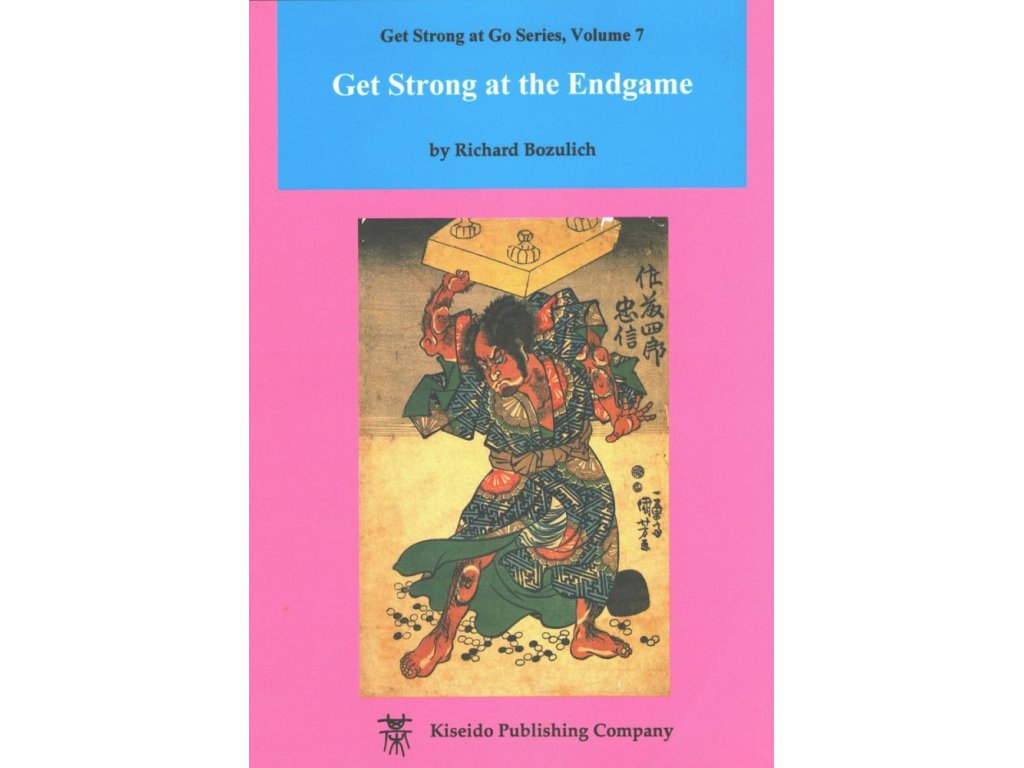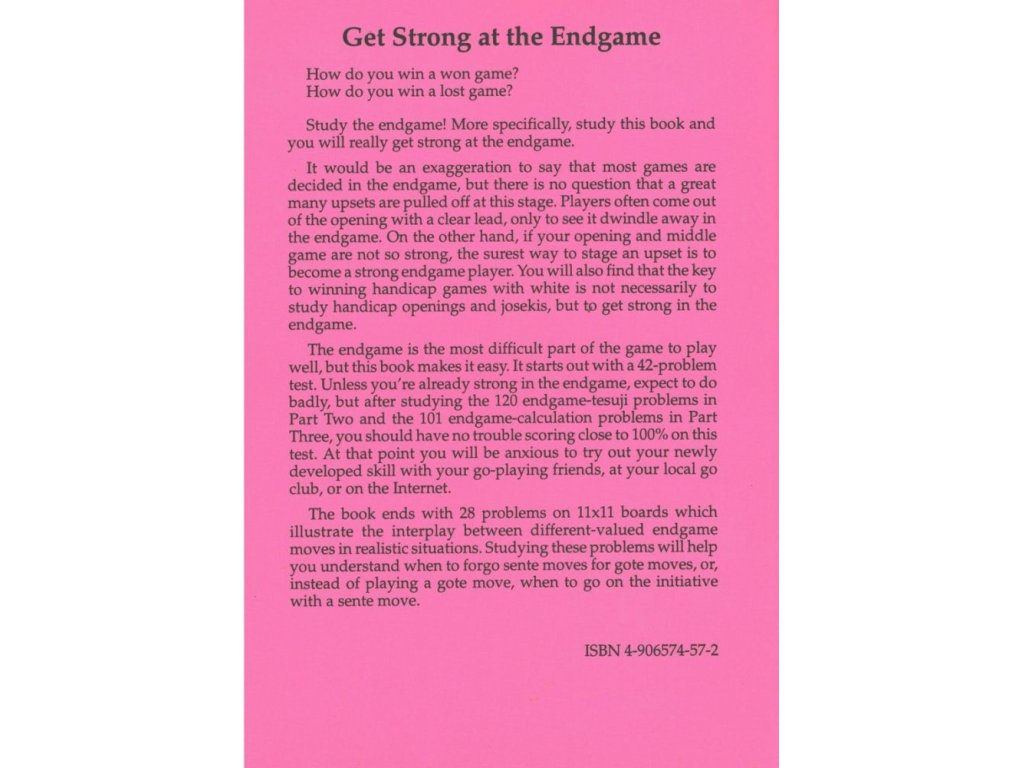We need your consent to the use of individual data so that you can show information about your interests, among other things. Click "OK" to give your consent.
Get Strong at the Endgame KA GS 07
How do you win a won game?
How do you win a lost game?
Study the endgame! More specifically, study this book and you will really get strong at the endgame.
It would be an exaggeration to say that most games are decided in the endgame, but for sure a great many upsets are pulled off at this stage. Players often come out of the opening with a clear lead, only to see it dwindle away in the endgame. On the other hand, if your opening and middle game are not so strong, the surest way to stage an upset is to become a strong endgame player. You will also find that the key to winning handicap games with white is not necessarily to study handicap openings and josekis, but to get strong in the endgame.
This book makes studying the endgame easy. It starts out with a 42-problem test. Unless you're already strong in the endgame, expect to do badly. But after studying the 120 endgame-tesuji problems in Part Two and the 101 endgame-calculation problems in Part Three, you should have no trouble scoring close to 100% on this test. At that point you will be anxious to try out your newly developed skill with your go-playing friends, at your local go club, or on the Internet.
One of the two most important skills in the endgame is the ability to calculate the value of a move. Since you will, in general, want to play bigger moves before smaller ones, being able to determine the size of various moves will go a long way toward increasing your endgame strength. In the 101 problems in Part Three, you are asked to calculate the value of basic endgame moves, such as various hane and connection moves made on the first, second, and third lines, and the value of endgame sequences that arise from commonly played josekis.
The other important endgame skill is knowing the basic endgame tesujis. After working your way through the 120 endgame tesuji problems in Part Two, you will surely look at the endgame quite differently.
The book ends with 28 problems on 11x11 boards which illustrate the interplay between different-valued endgame moves in realistic situations. Studying these problems will help you understand when to forgo sente moves for gote ones, or when to go on the initiative with a sente move.
Finally, there is a full board endgame problem in which a professional plays against another professional, then from the same position plays against an amateur dan player. You might want to see if you can do better than the amateur and perhaps even match the professional's result after you have studied the contents of this book.
- Author: Richard Bozulich
- Number of pages: 224
- Book size: 21,0 x 14,8 cm
- Publisher: Kiseido Publishing Company
- Year of issue: 1997
- ISBN: 9784906574575






 Cookie - Settings
Cookie - Settings
